Date: 25th November 2018
Abe-Monjuin (安倍文殊院) is a temple dating back to year 645 built by Abe no Kurahashimaro as the Abe’s family ujidera (family temple) which was originally located 300m southwest of the present temple.
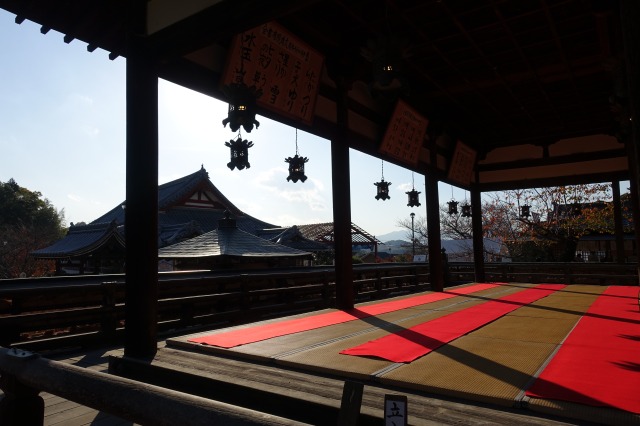
The Hondo (main hall) dates back to 1665 after being rebuilt numerous times due to fire. The main object of worship of this temple is the Monju Bosatsu (Manjushri), the Buddha of Wisdom, thus making Abe-Monjuin popular among examinees who come here to pray for good exam results. The Monju Bosatsu statue (Tokai Monjuzou) sculpted by the famous Buddhist sculptor Kaikei in 1203 stands at 7m, and is depicted riding on a lion flanked by four attendants – a youth Zenzai Douji, the king of Khotan (Utennou), the elder Saishou Rounin and the monk Buddhapari. The largest statue of Monju Bosatsu in Japan awed me and fellow visitors.

The Ukimido Pavilion (Nakamaro-do) built in 1985 on the small lake is dedicated to the goddess Benzaiten. The pavilion also enshrines Abe Nakamaro and Abe no Seimei, who were both born here. Abe no Seimei is an onmyoji during the Heian period who practiced onmyodo, the Japanese esoteric cosmology. A little bit off-topic, but I learned about Abe no Seimei after watching one of Yuzuru Hanyu’s free-program skate which uses the soundtrack “Seimei” from the 2001 movie “Onmyoji”.

In the Ukimido Pavilion you can do the Shichimairi (seven worships), which involves circling the pavilion while making a wish and offering an amulet to the deity at the end of the circle. This is repeated for 7 times.
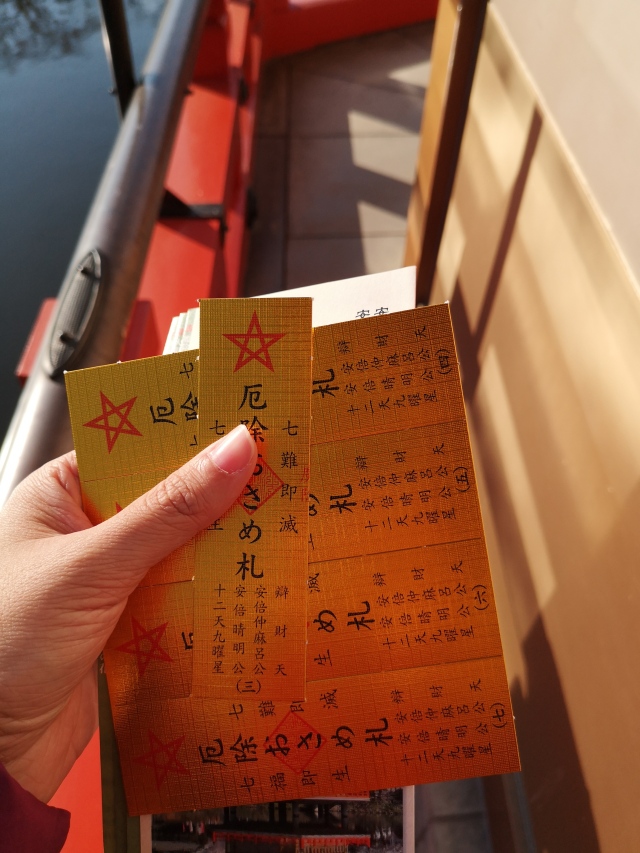
There is also a kofun in the temple, the Monjuin Nishi Kofun which was built around the 7th century. It is believed to be the tomb of Abe no Kura Hashimaro, who built Abedera.

There is also a shrine here, Hakusan-do built in the Muromachi period worshipping the Hakusan mountain in Ishikawa Prefecture which is linked to Abe no Seimei who worshipped Hakusan, thus a branch shrine was built here. The deity worshipped at this shrine is Kukurihime, the God of matchmaking in Japanese mythology and thus is popular for granting love wishes.
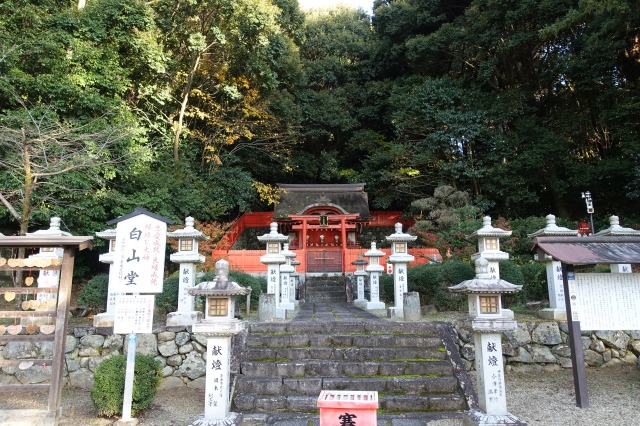
If you go up the small staircase nearby, you will reach the Abe no Seimei-do worshipping Abe no Seimei. This is where Abe no Seimei was said to have studied the stars.

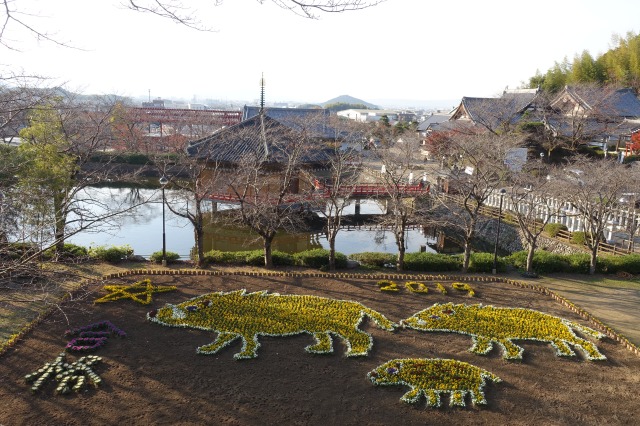
The admission fee for the main hall includes a bowl of matcha and a handmade rakugan confectionery made of Yoshino kudzu starch.
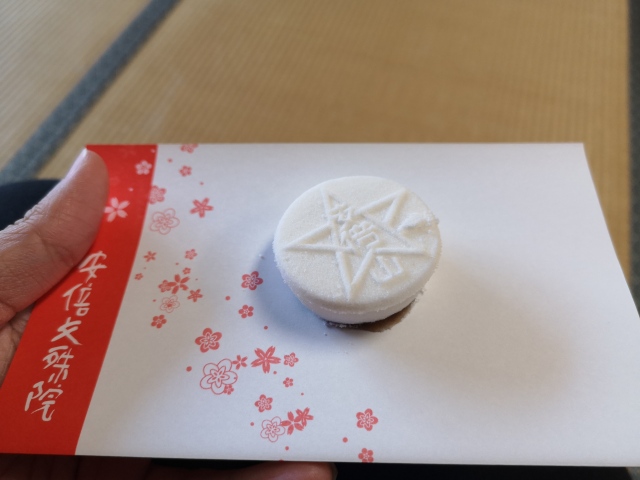
500 cherry blossom trees blooms around the temple in spring, while you can enjoy cosmos flowers in early autumn between mid September to early October.

Info
Opening hours: 09:00 – 17:00
Admission fee:
- A: Main Hall & Matcha / Wagashi: 700 yen
- B: Ukimido Pavilion with Shichimairi / amulet: 700 yen
- A+B: 1200 yen
Access
Abe-Monjuin is a 20-mins walk away from Sakurai Station on the JR Sakurai Line or the Kintetsu Railway Osaka Line.
- From JR Nara Station, take the JR Sakurai Line for 30 mins, 320 yen
- From Kintetsu Osaka Uehommachi Station, take the Kintetsu Osaka Line for 40 mins, 620 yen
- From Kintetsu Nabari Station, take the Kintetsu Osaka Line for 30 mins, 490 yen
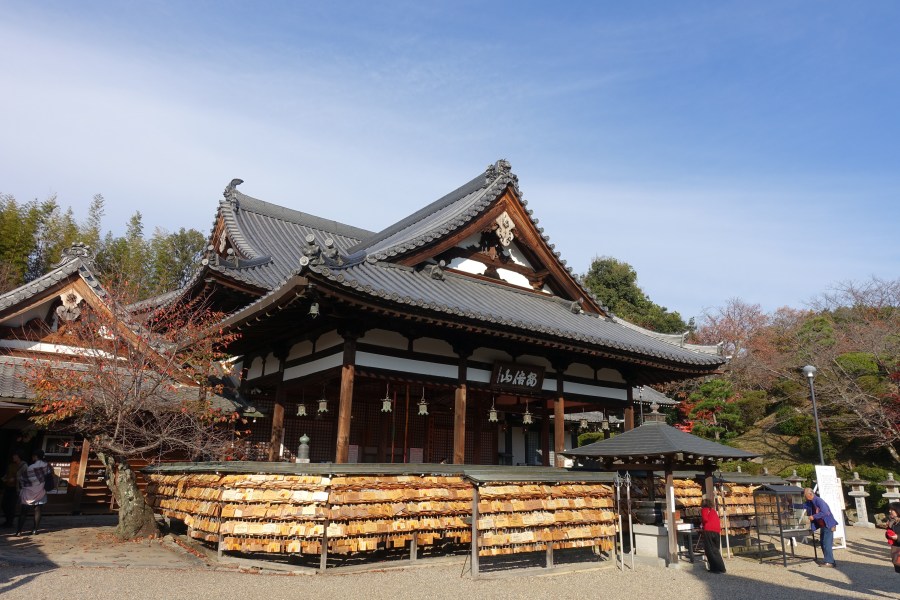
A very interesting temple! I first learned about Abe no Seimei through the manga Shonen Onmyouji 🙂 I would love to get the goshuin of this temple!
LikeLiked by 1 person
Dear Jennifer, I smiled when I read that you learnt about Abe no Seimei through Yuzuru Hanyu’s figure skating performance. I’ve written about how Yuzuru has increased the profile of the Wizard of YinYang in my blog on Fusui in Japan. There are many pictures of Yuzuru on the emas at Seimei Shrine in Kyoto for example. There is a shrine, in Osaka, that claims the distinction of being the birthplace of Abe no Seimei. I have visited there and will now visit the temple you have described in this post. It sounds excellent. 🙂
LikeLiked by 1 person
Hi Jann. I have read about those Shrines you mentioned and would love to visit them one day. Thank you for the info.
LikeLike
Pingback: Yamanobe no Michi, The Oldest Road in Japan: Part 1 – Japan's Wonders
Pingback: Spring 2019 Tohoku Travel: Random Photos – Japan's Wonders